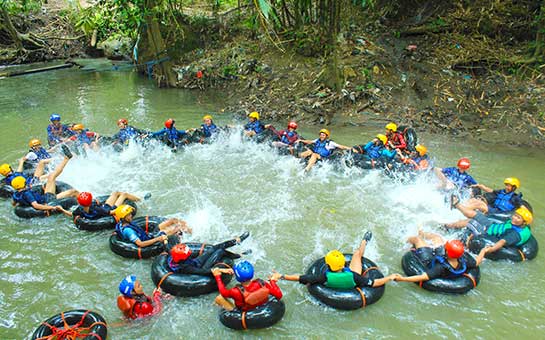Tubing is a very thrilling recreational activity with individuals riding rubber tubes through the air, water, or snow. In some parts of the world, it is also known as inner tubing or bumper tubing. The tubes are called “donuts” or “biscuits” because of their round shapes with a hole in the middle.
Depending on the conditions in which you go tubing, the activity can involve some risks. This is why you should have tubing travel insurance, which can provide coverage for medical treatment for injuries sustained while tubing.
Travel Insurance for Tubing
Tubing can be practiced on open water, lakes, rivers, or even waterparks. Snow tubing is practiced on snowy hills and slopes. If you want to enjoy tubing while travelling, then make sure you have travel insurance that covers tubing.
Most standard travel insurance plans don’t cover the increased risk of hazardous or adventurous sports like tubing. Be sure to read the fine print before purchase to make sure it provides the coverage you need.
Only engage in tubing activities from registered operators. They make sure that the tubes are in good shape and they are frequently inspected for perforations.
If you are engaged in tubing in a faraway lake or on a ski hill, chances are you will be located far from urban medical facilities. If you are injured, you might need medical evacuation, and tubing travel insurance can cover the expenses. Make sure these terms are included before enjoying your tubing adventure.
Introduction to Tubing
Tubing is traditionally an individual activity, which means that one person rides a tube at a time. However, there are also larger tubes with multiple riders.
In towed tubing, the tubes are tethered to some kind of a vehicle. The vehicle pulls the tubes on water, snow, or even through the air. The intensity of the ride depends on the speed at which the crafts pull the tubes.
Free-floating tubing is also common, and this activity mostly takes place on running water. The riders paddle their tubes with their hands, assisted by the flow of the current.
Whitewater tubing takes things up a notch as the tubes have to be maneuvered through rapids and waterfalls, some of which can be quite dangerous due to the velocity of the water.
Risks of Tubing
There are certain risks involved in tubing, so you should be careful of the following factors.
The tubes are well-built and firm, but at the end of the day, they are just rubber tubes inflated with air. Make sure that the tube does not hit any sharp object or protruded rocks, as that can cause the tube to be punctured and deflate.
Do not try to secure yourself to the tube using additional ropes or contraptions. Only use the standard belts used for the activity. There have been reported cases where the rider has drowned by getting entangled in the additional ropes.
First, check if the tube is properly inflated and make sure there are no holes or perforations.
If you are riding the tube through snow, make sure you are in full control of the tube. Tubes tend to skid a lot on the snow, so regulate your or your vehicle’s speed according to the terrain of the region.
In kite tubing, which involves towing the tube at high speed so that it takes the air, there is the danger of hitting something on landing. Make sure the water or the surroundings are free from any kind of additional vehicles or obstructions which you might hit.
If you want to enjoy tubing, make sure you have travel insurance for tubing. It can provide coverage for the cost of treatment if you are injured while tubing.
